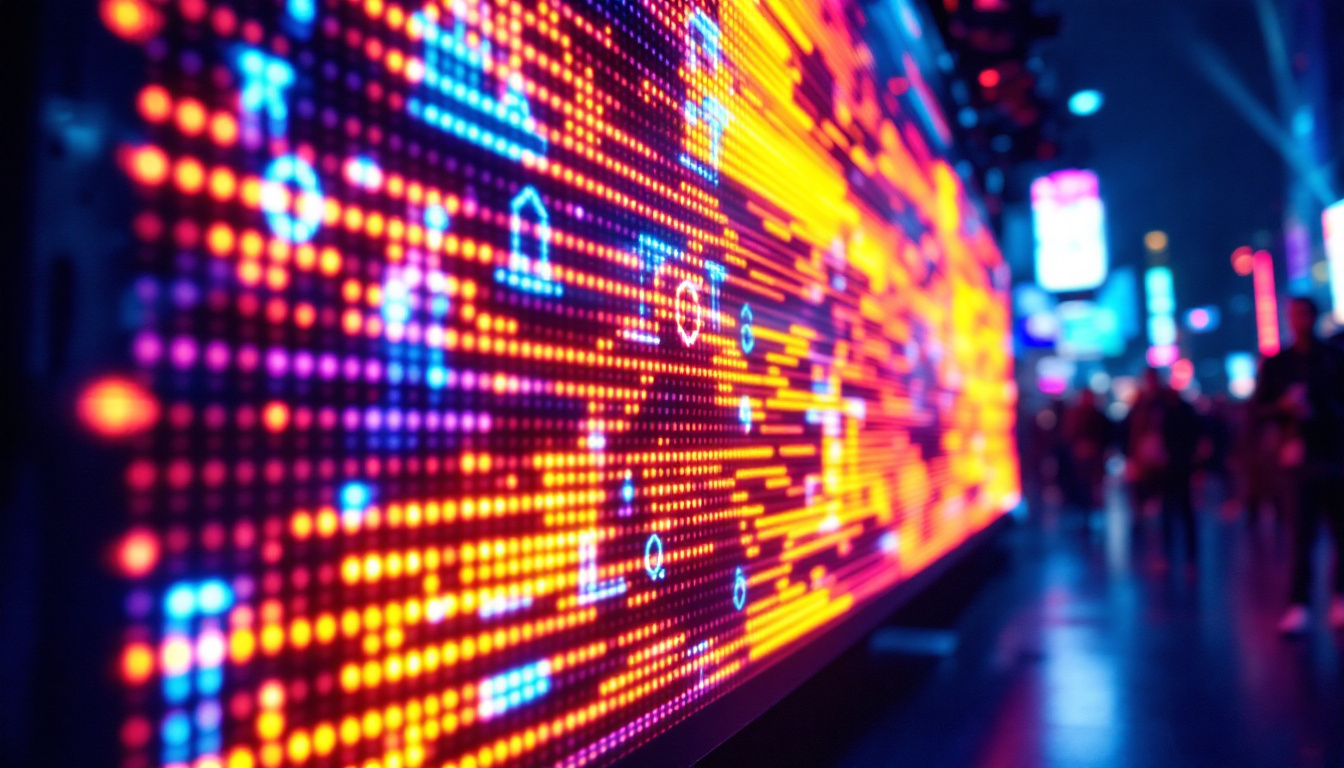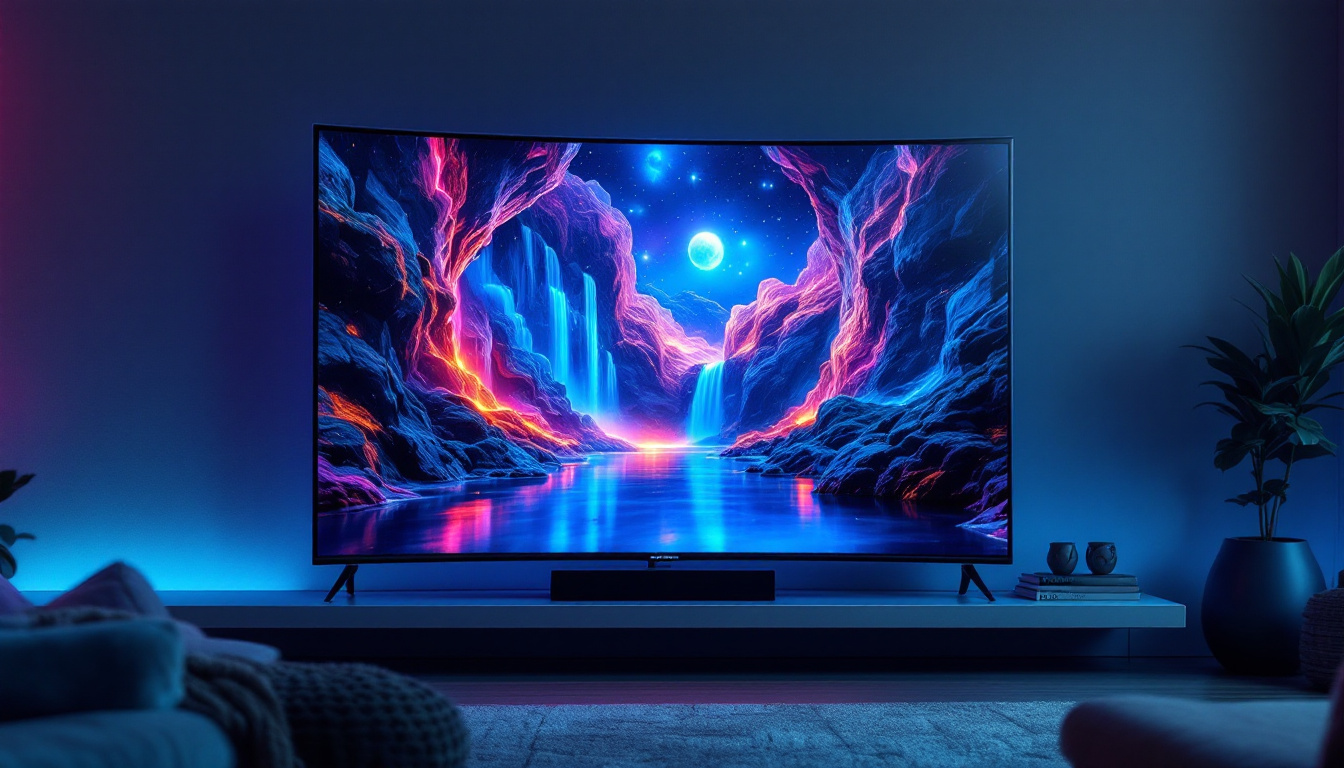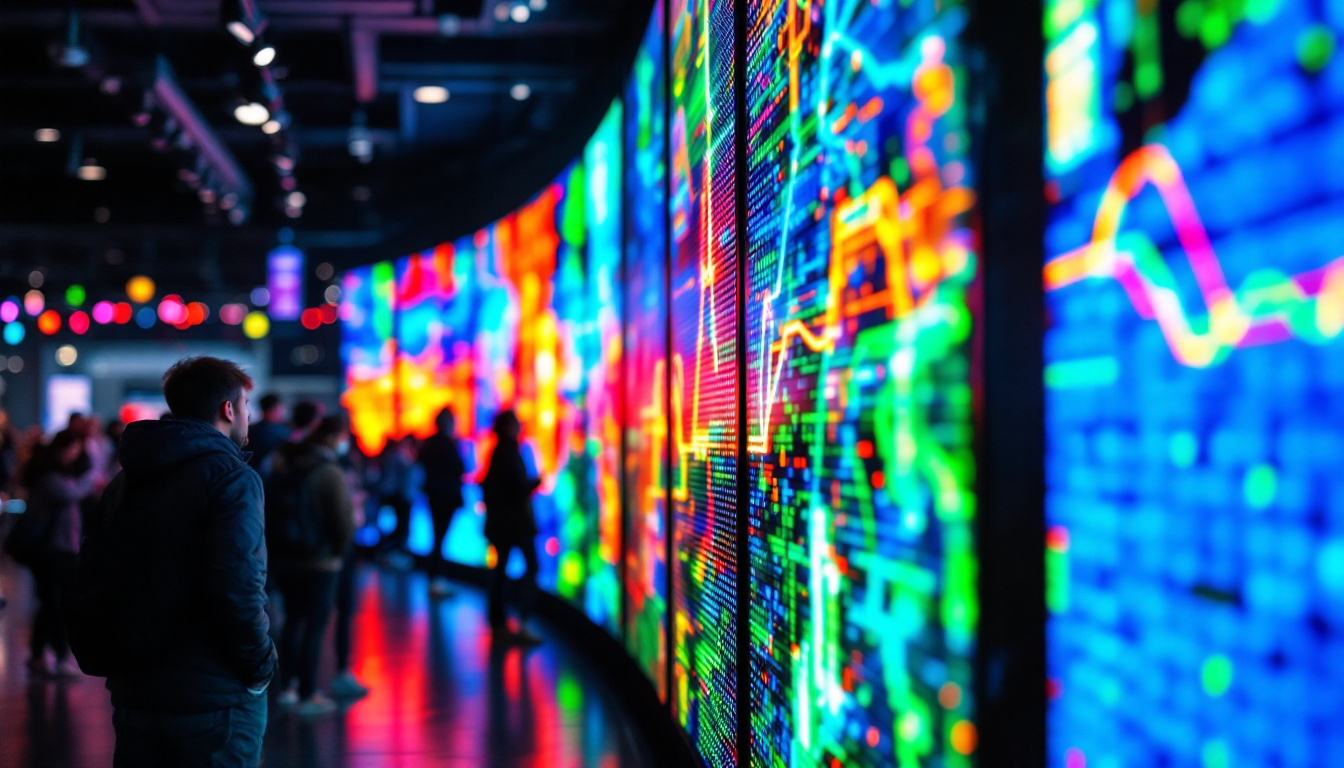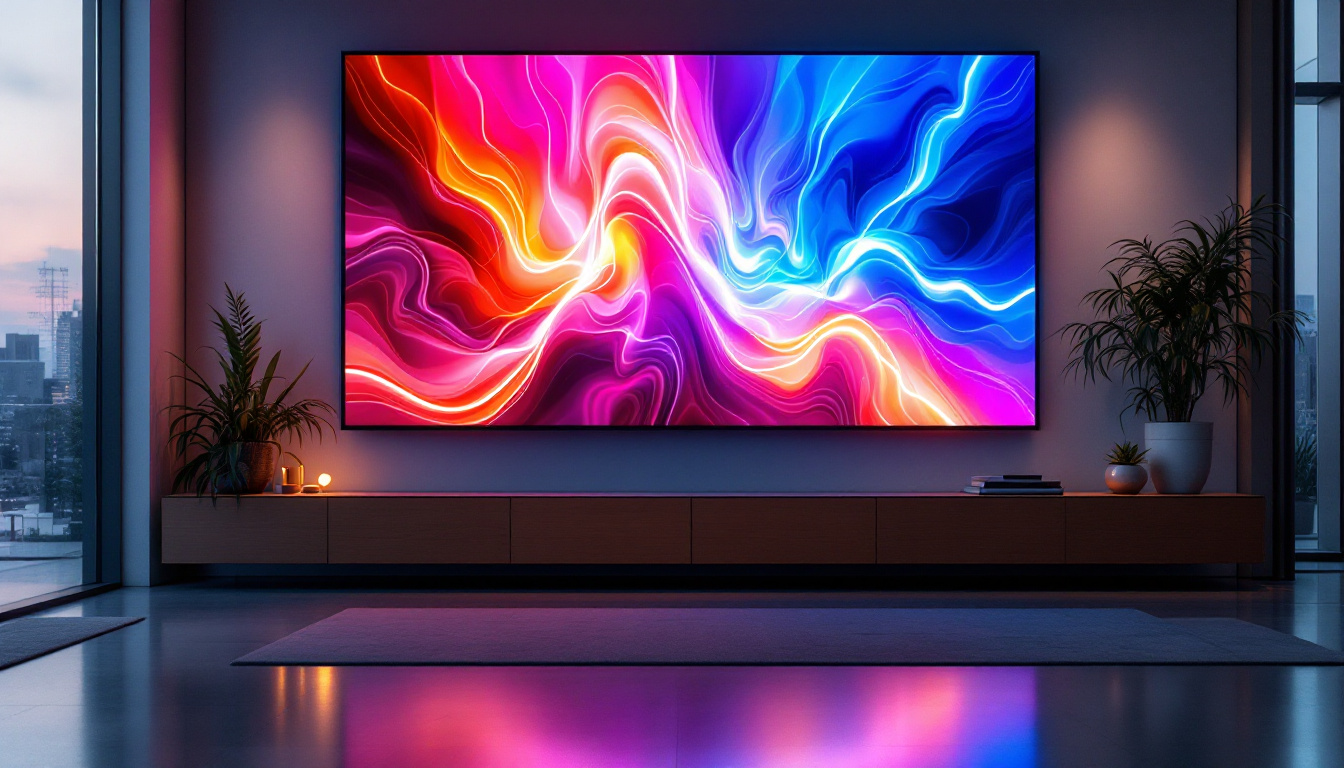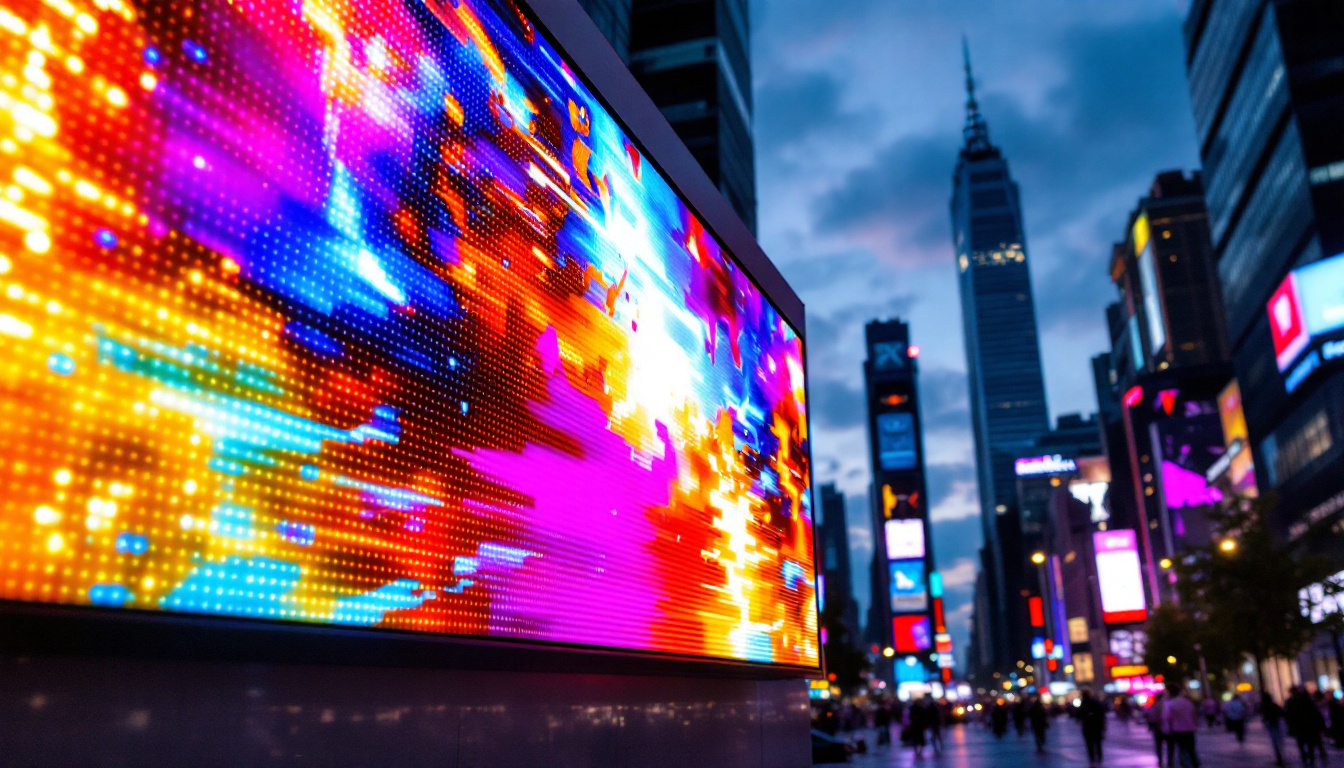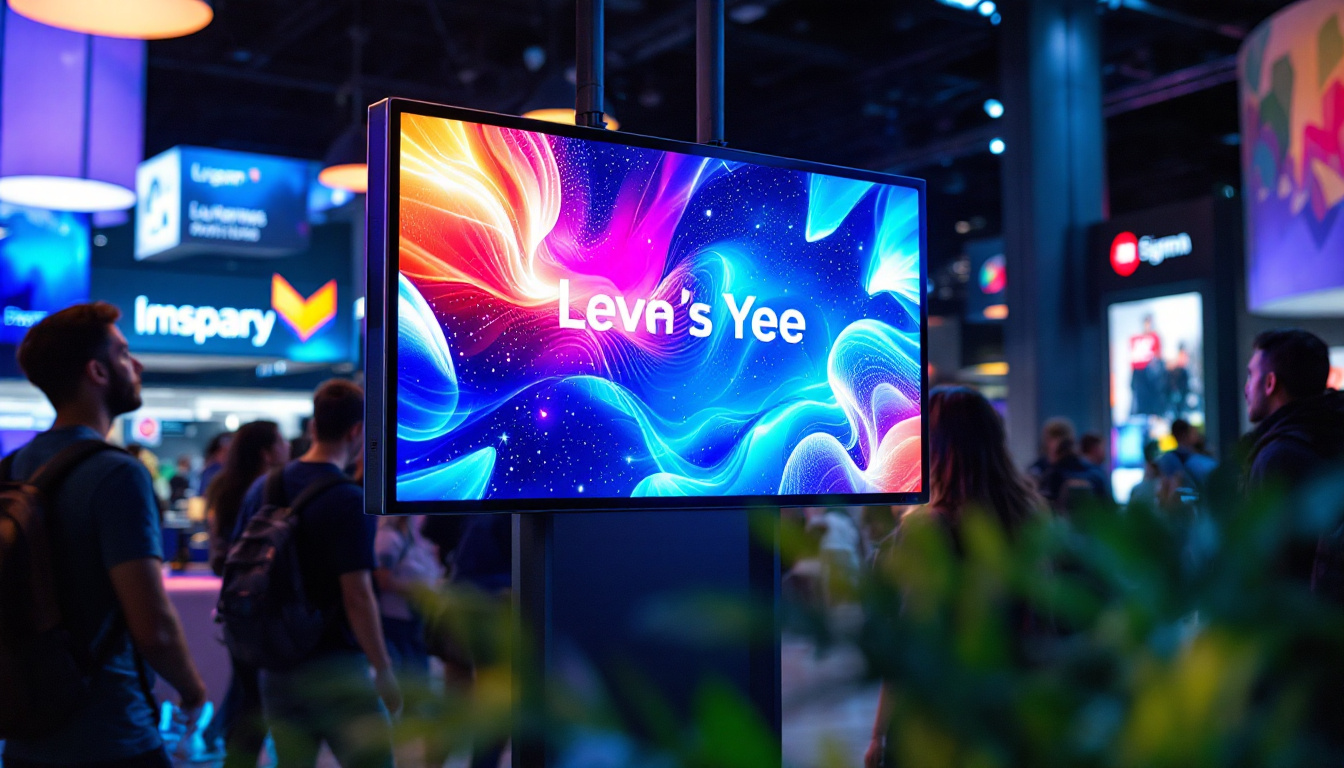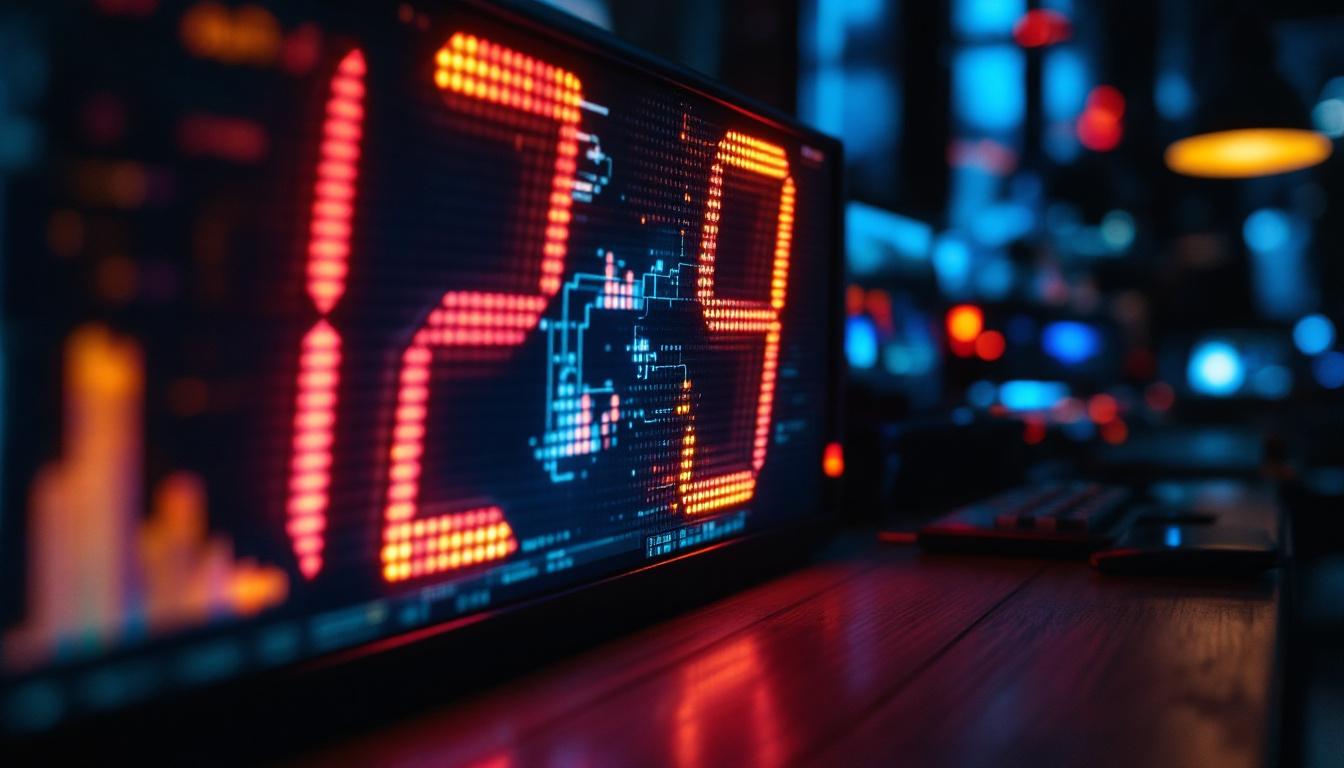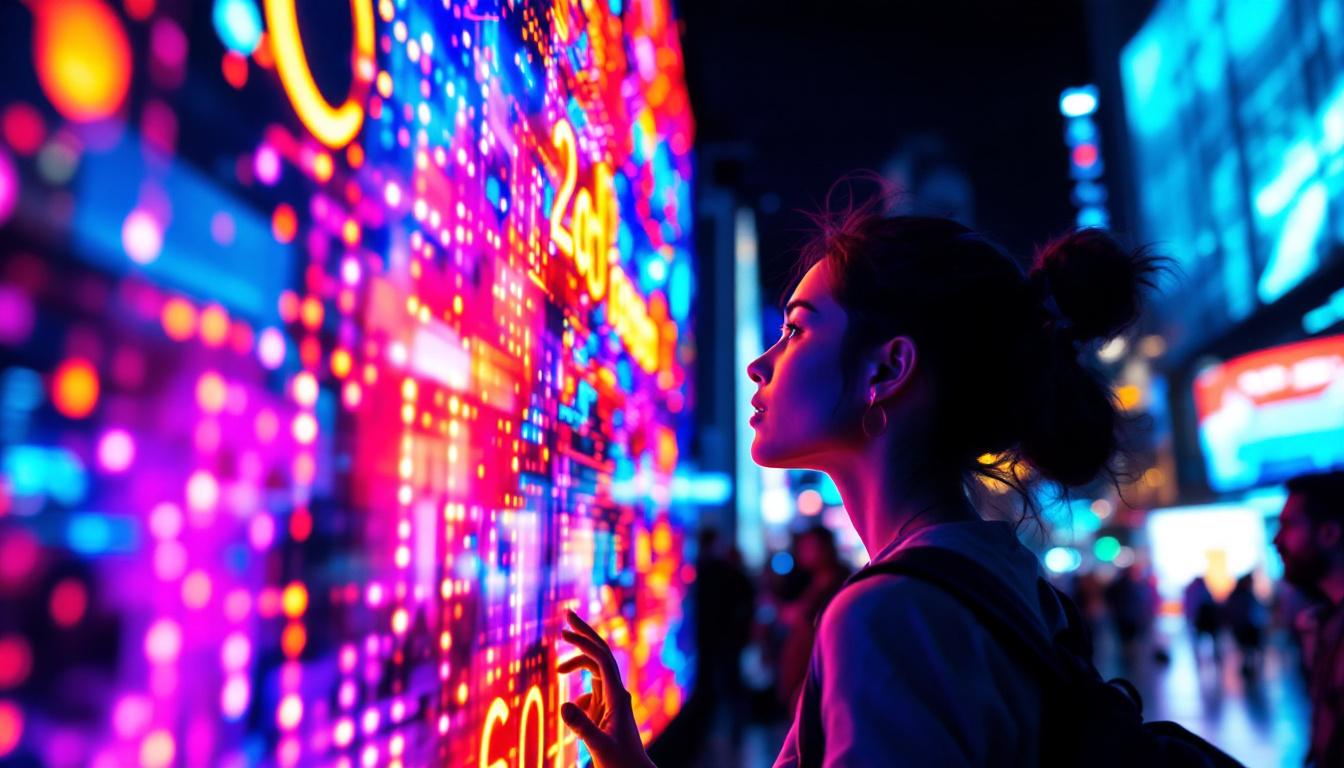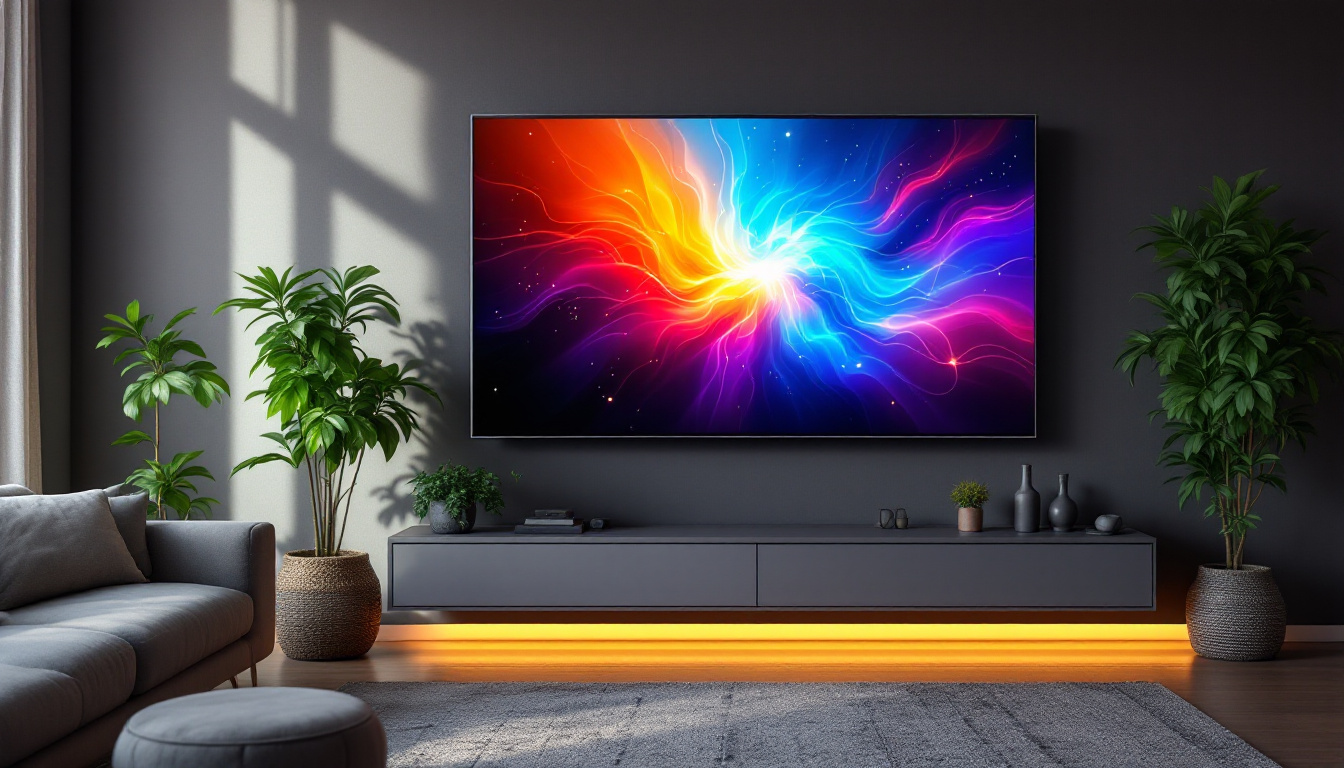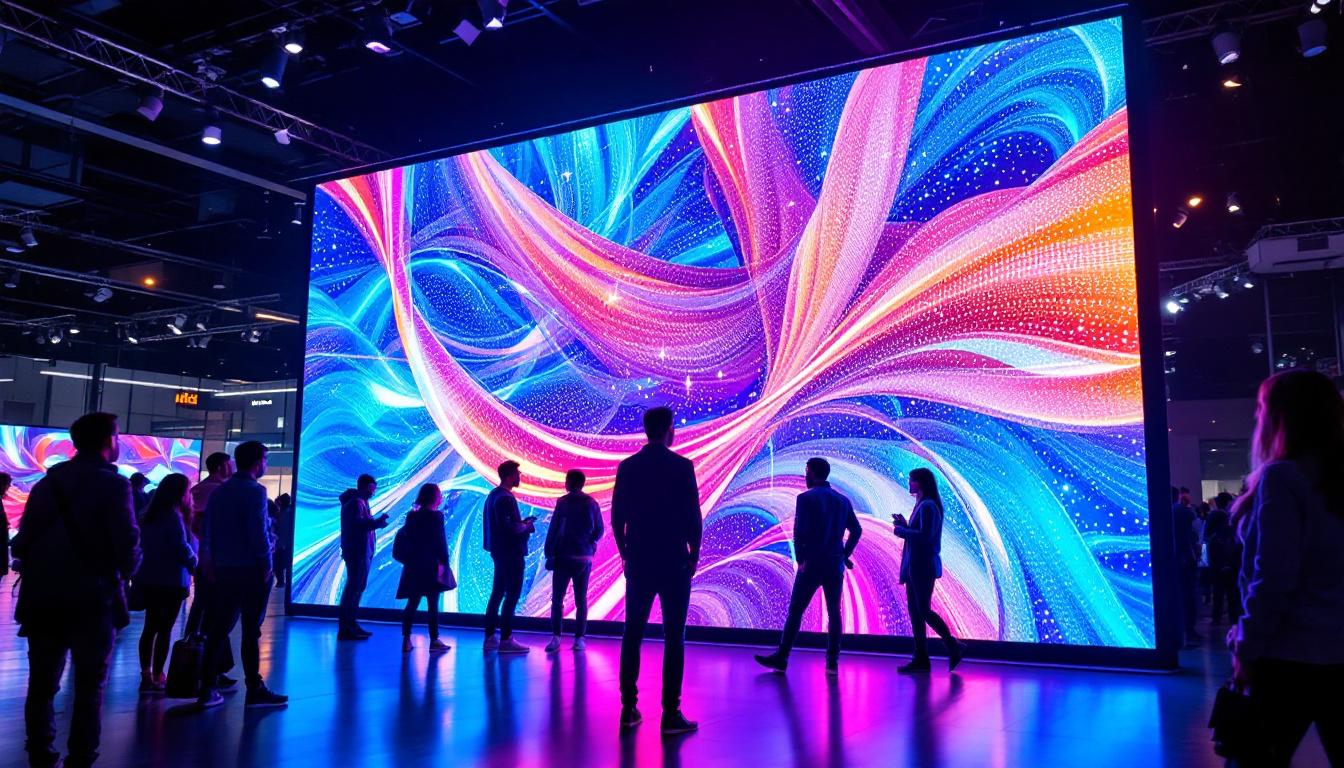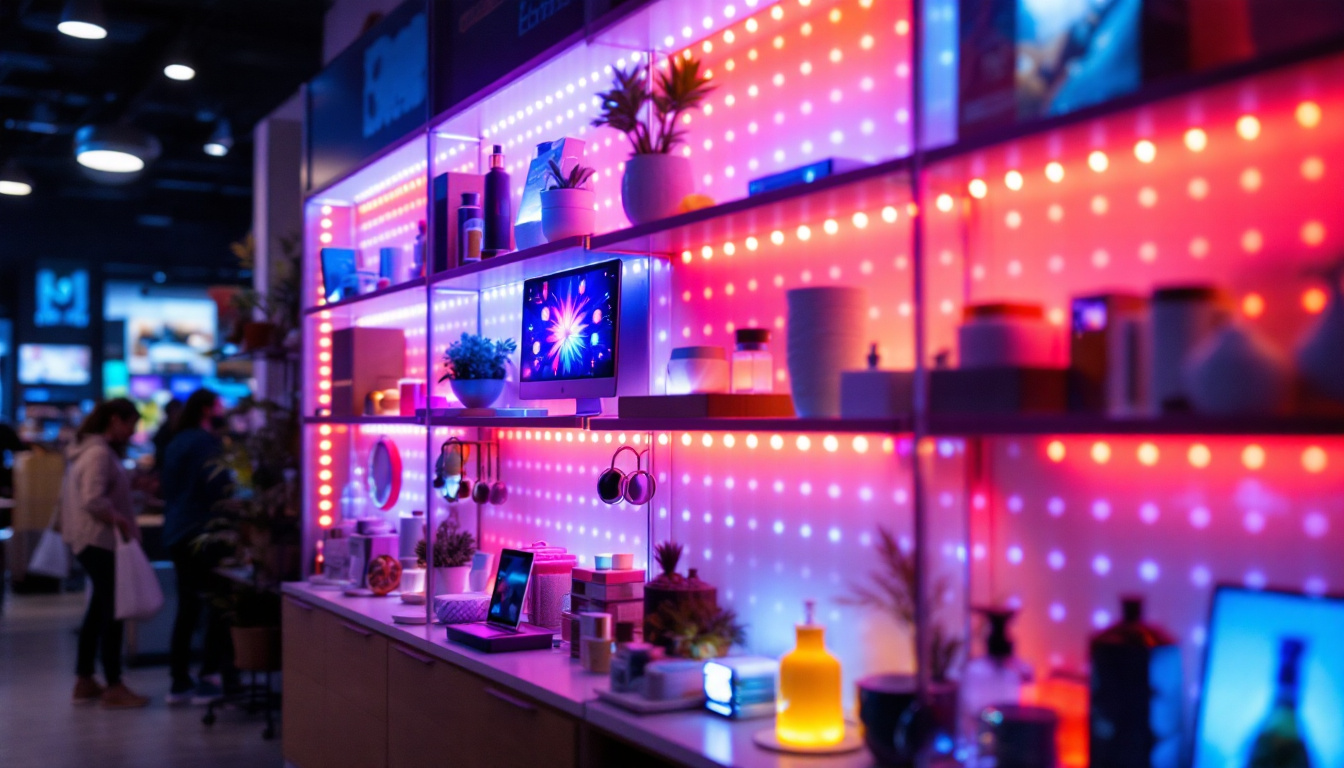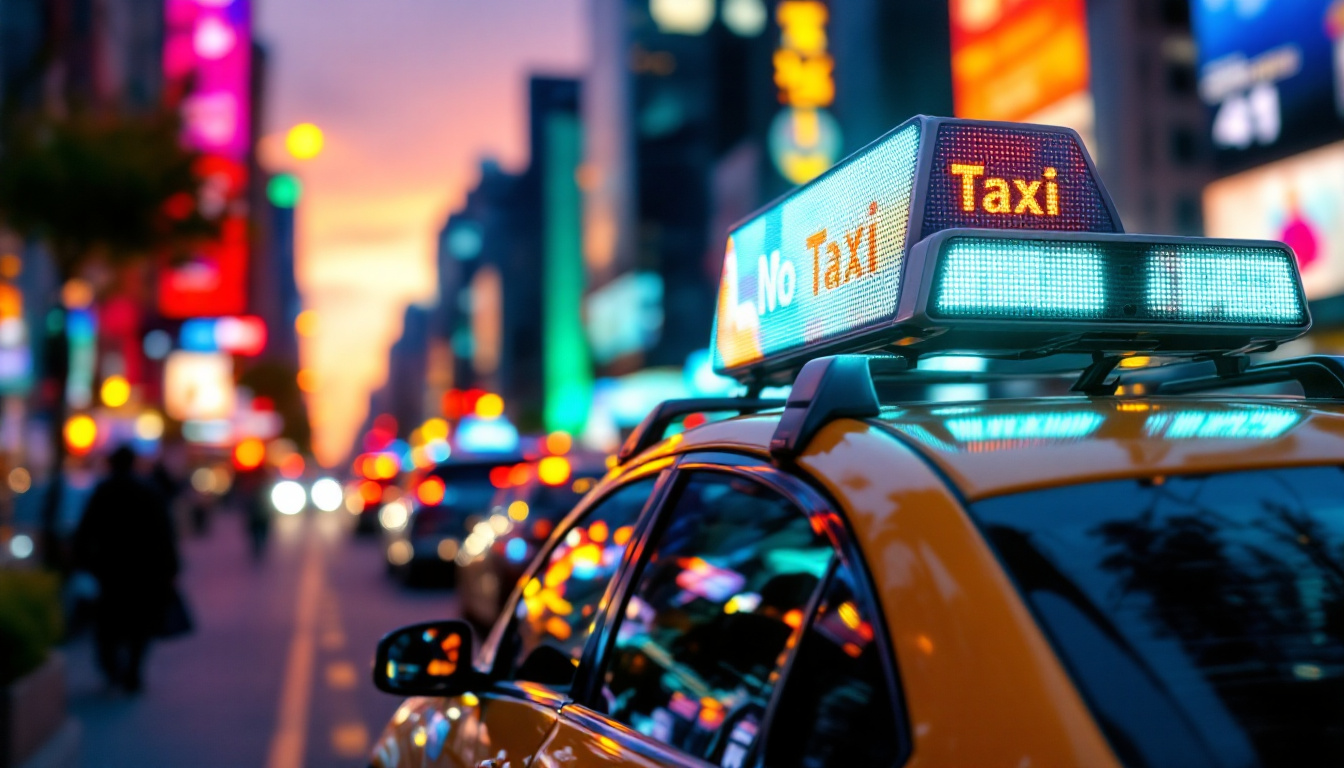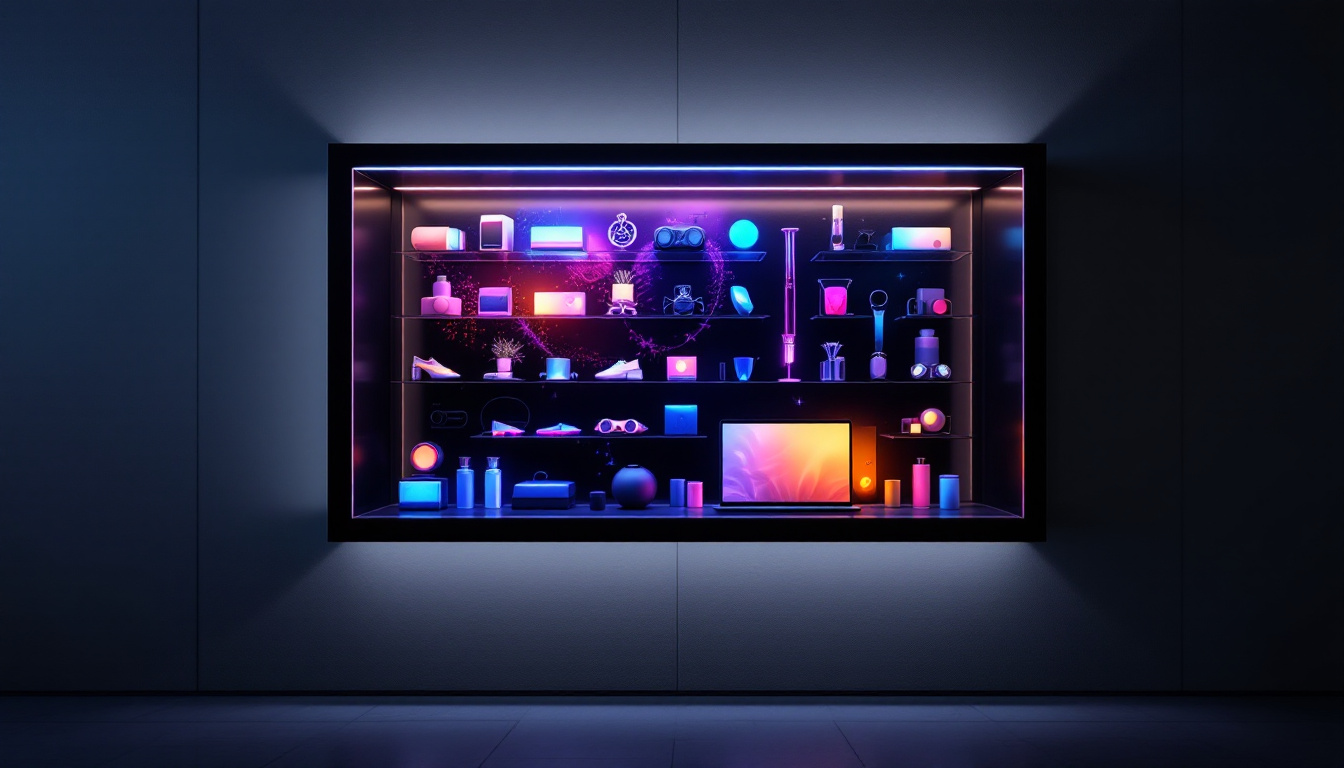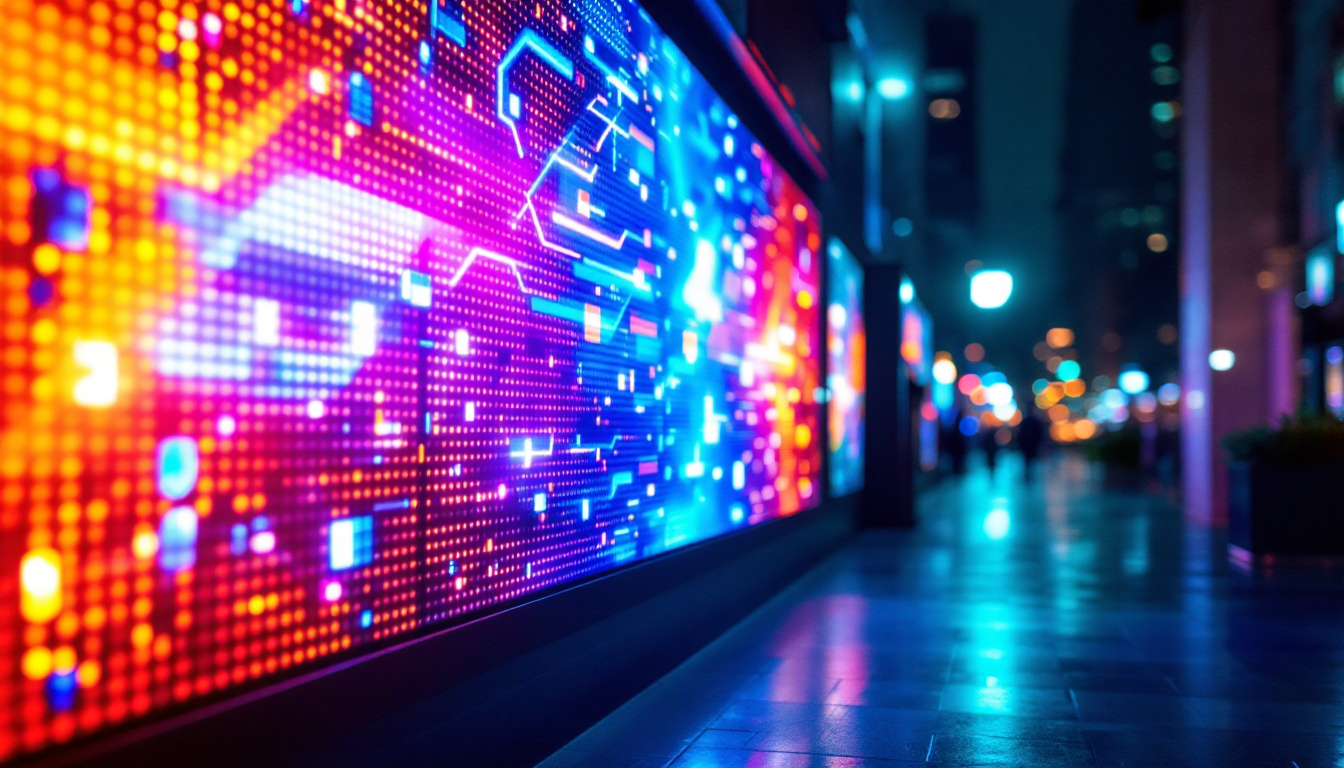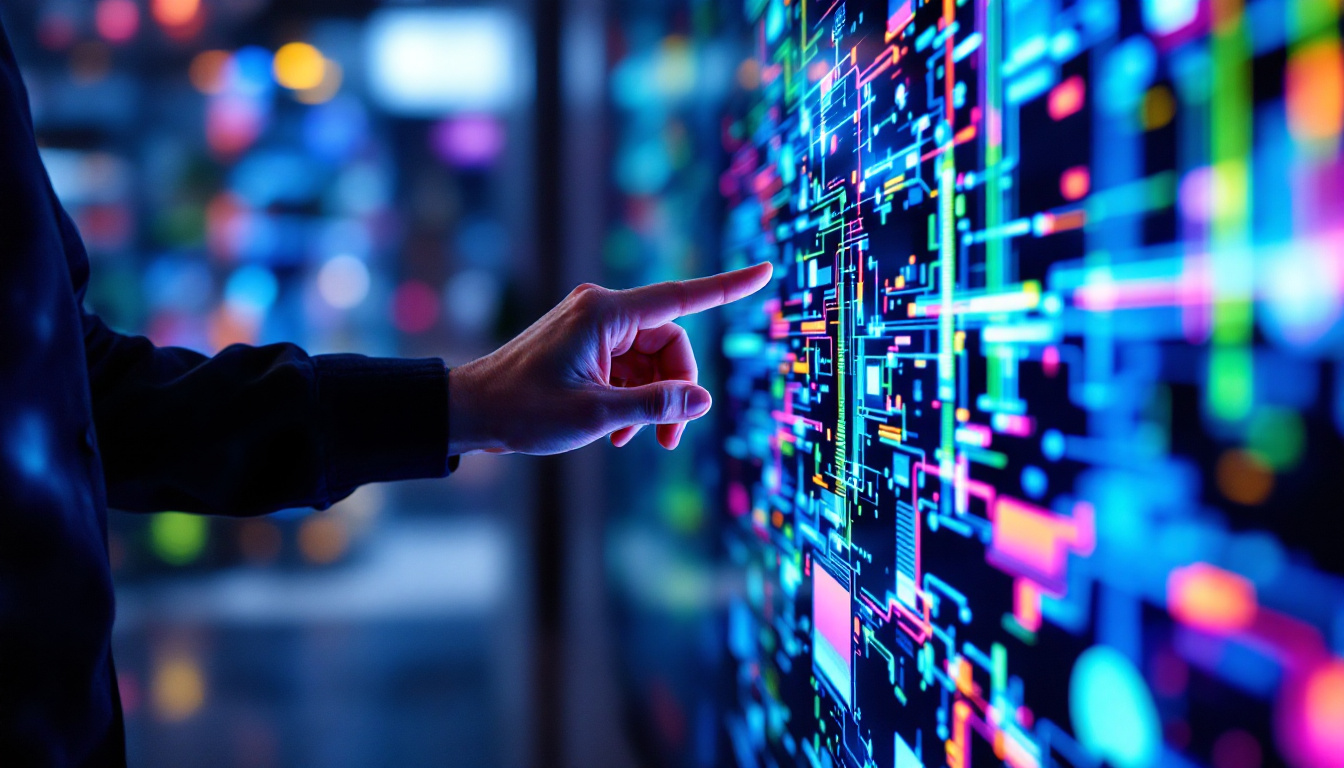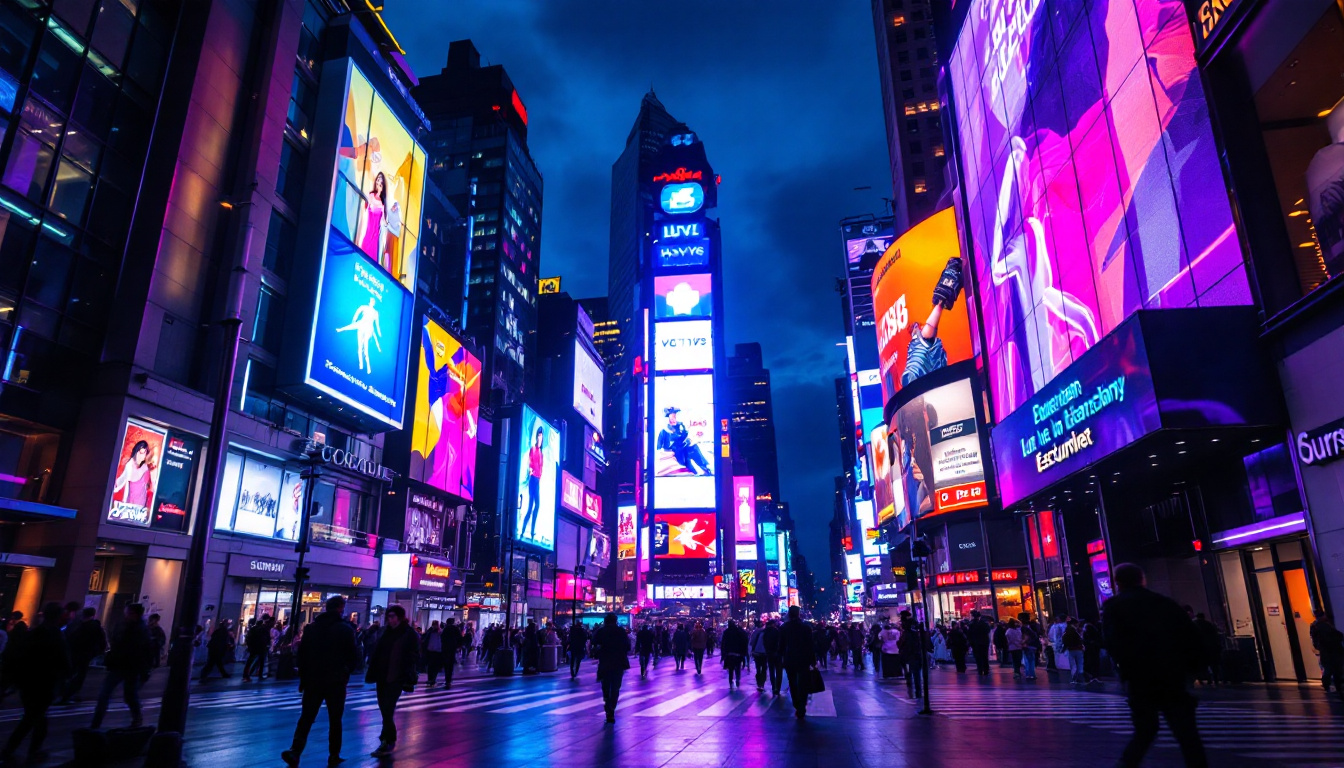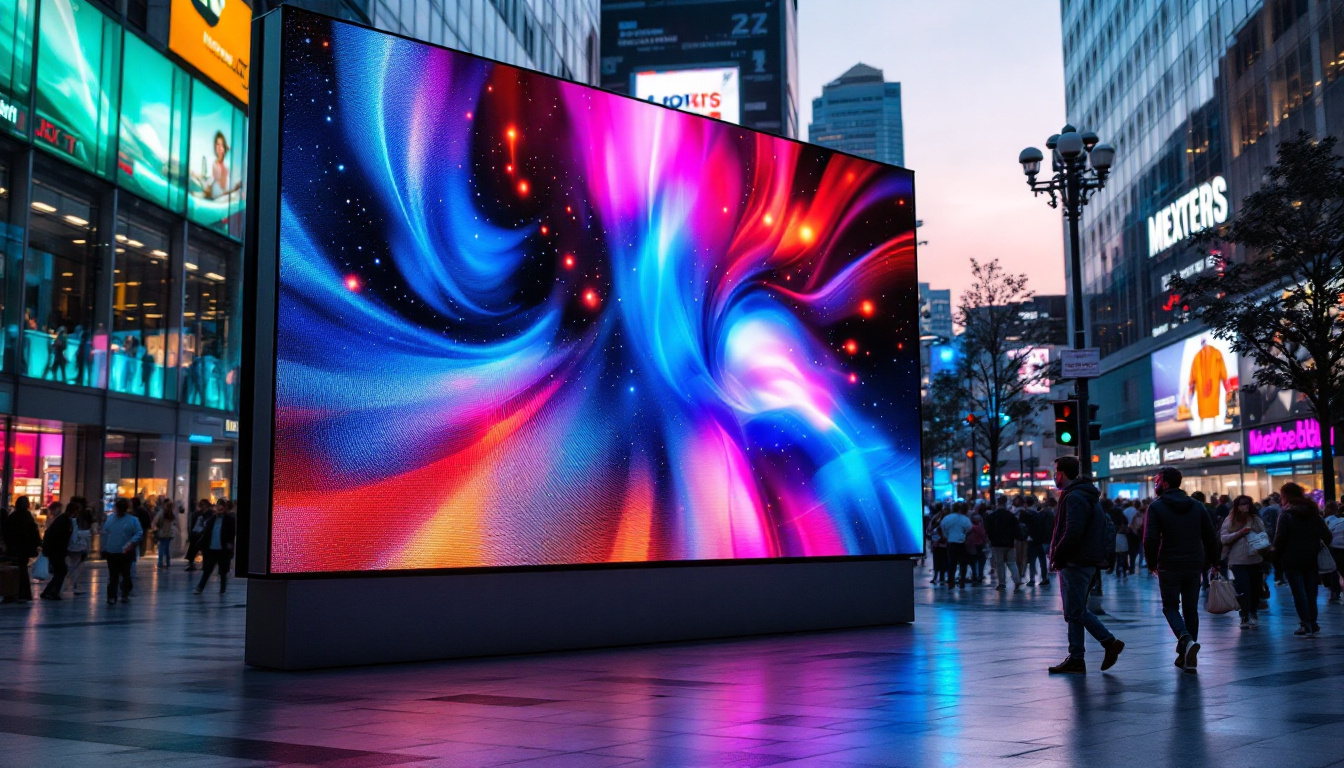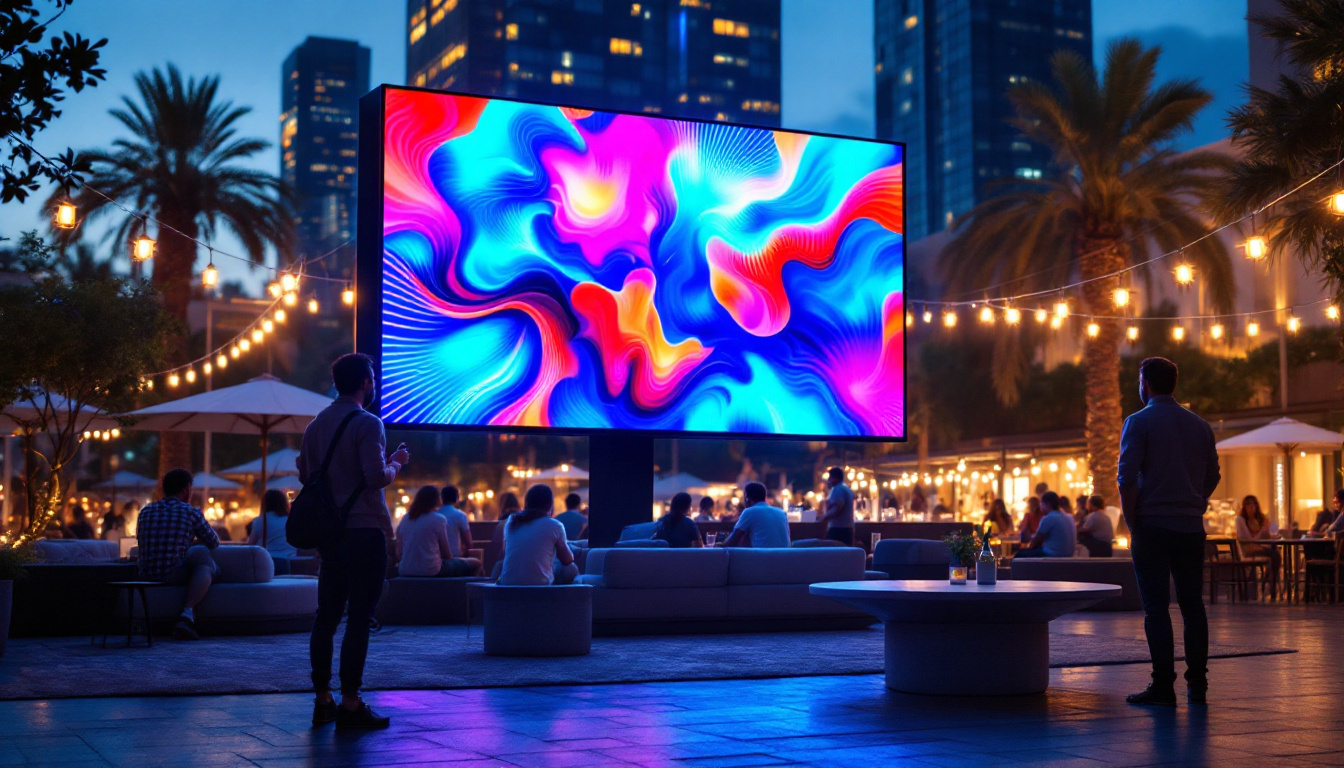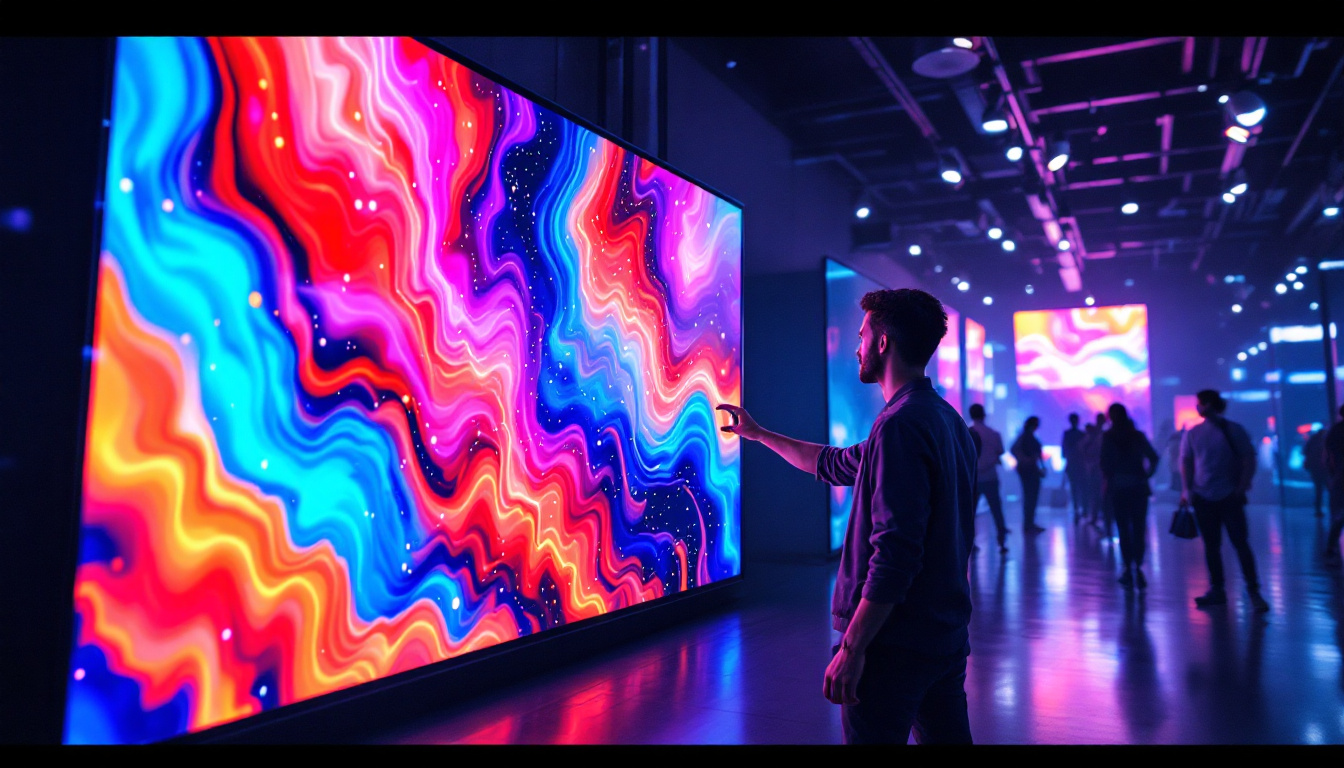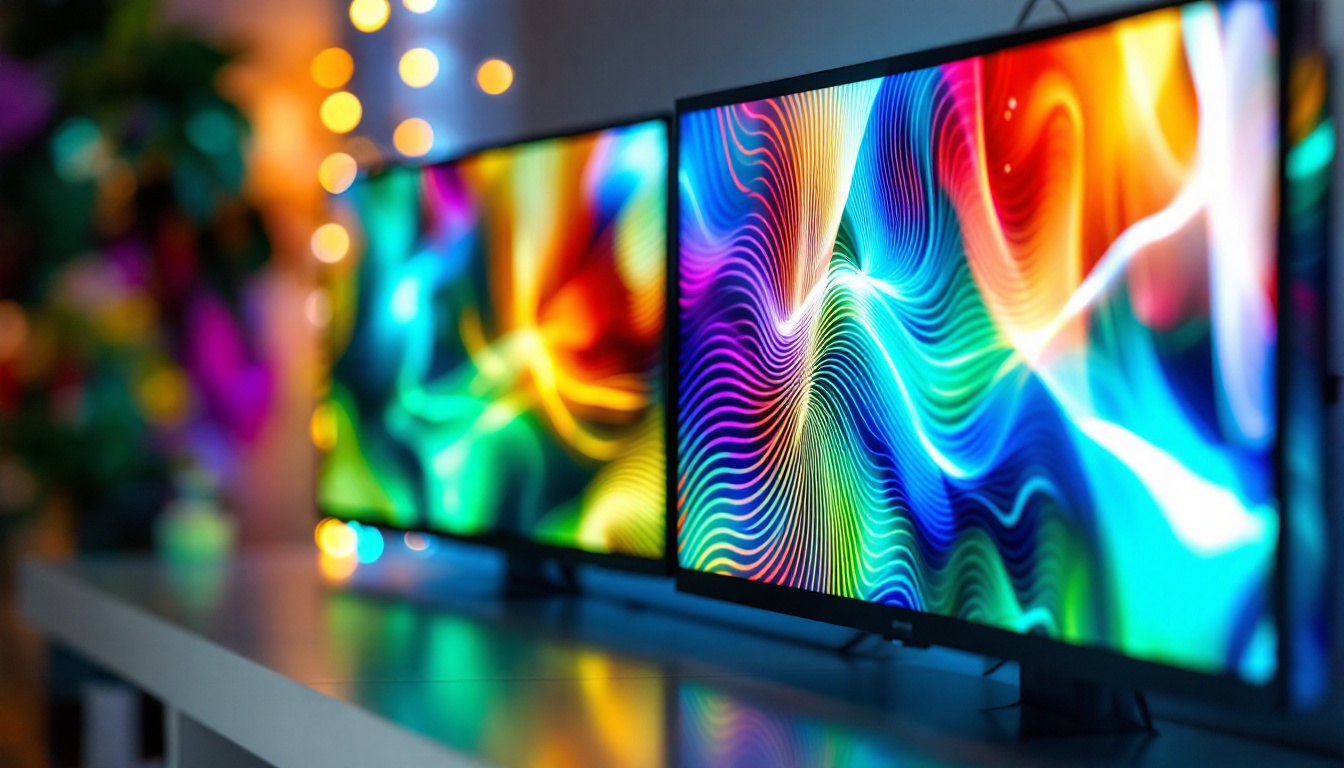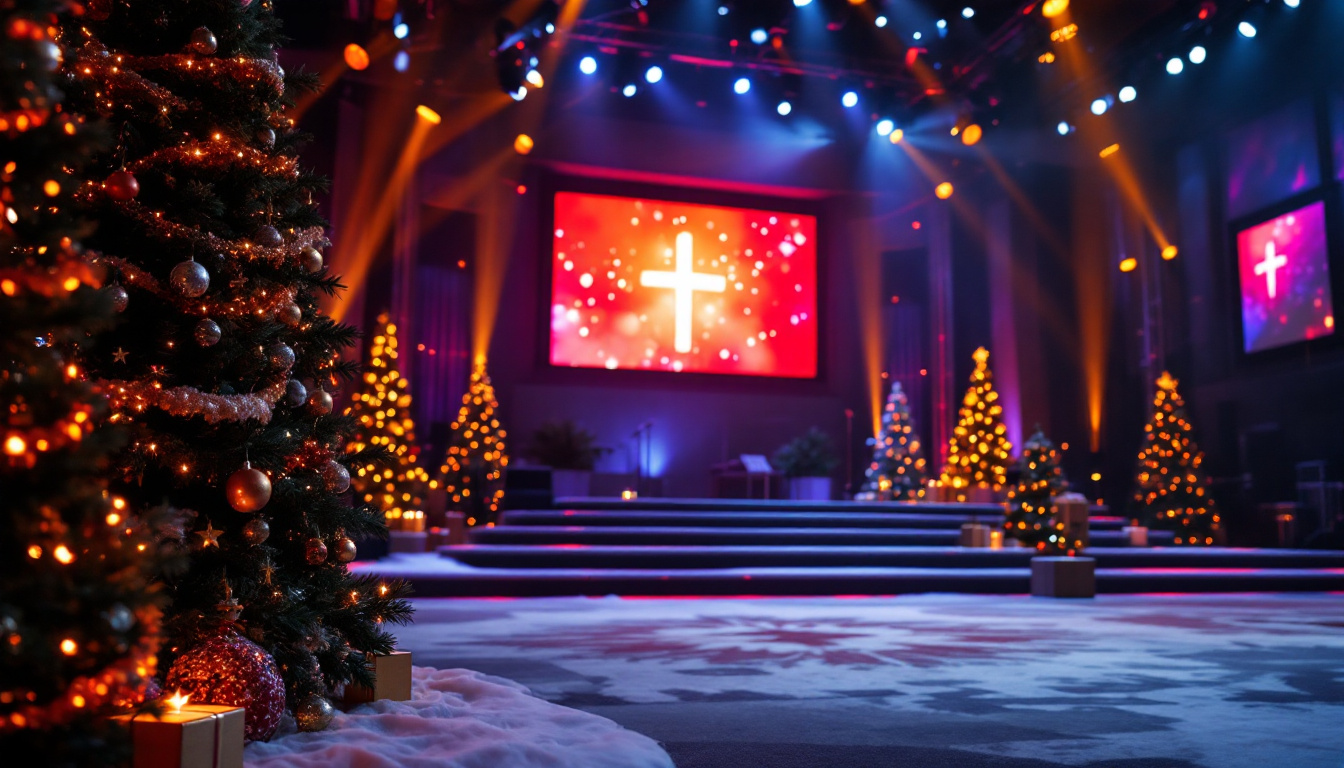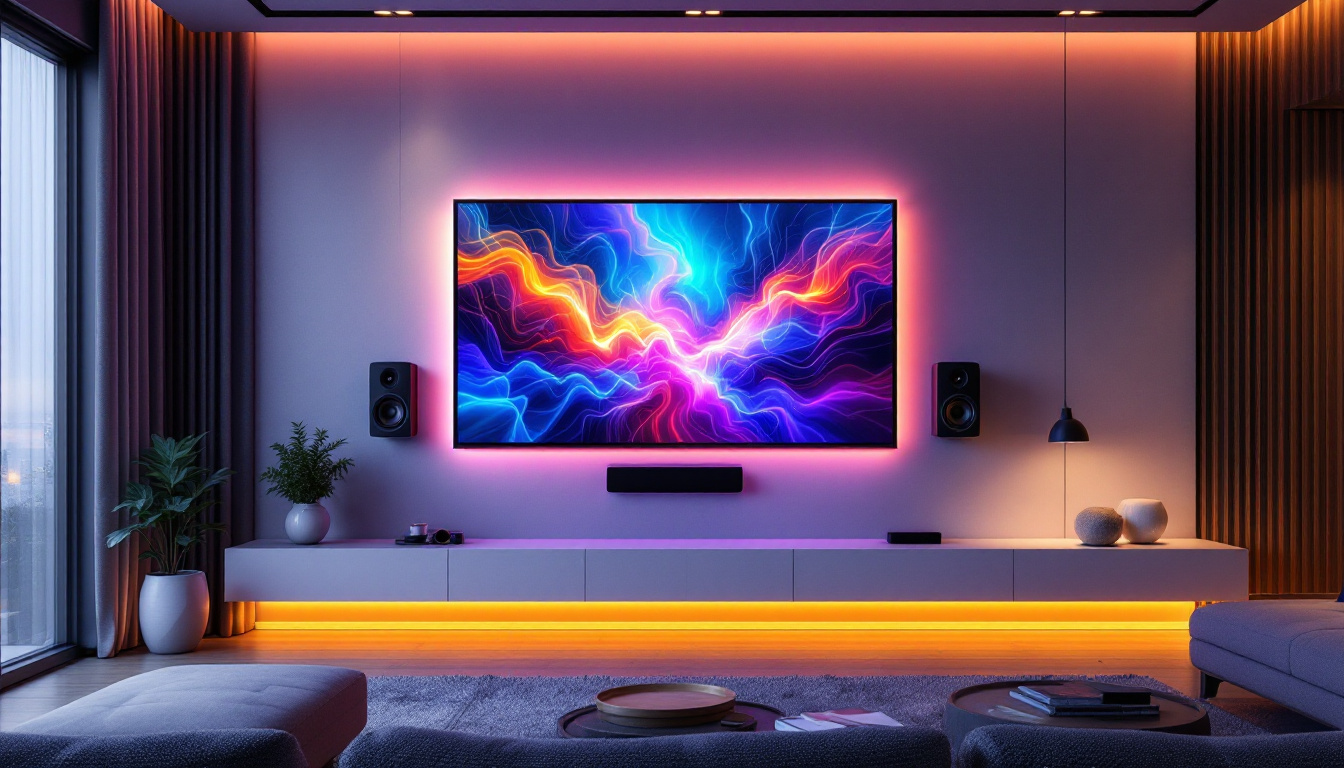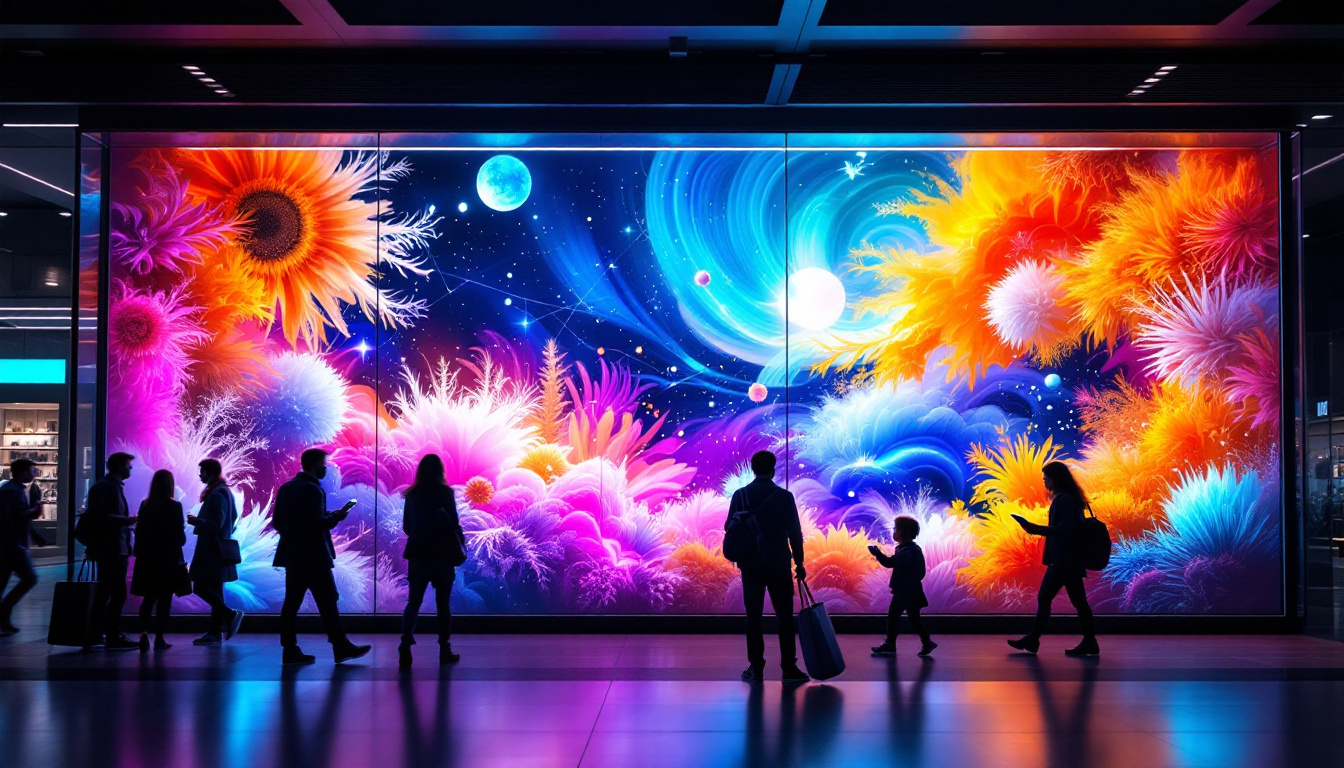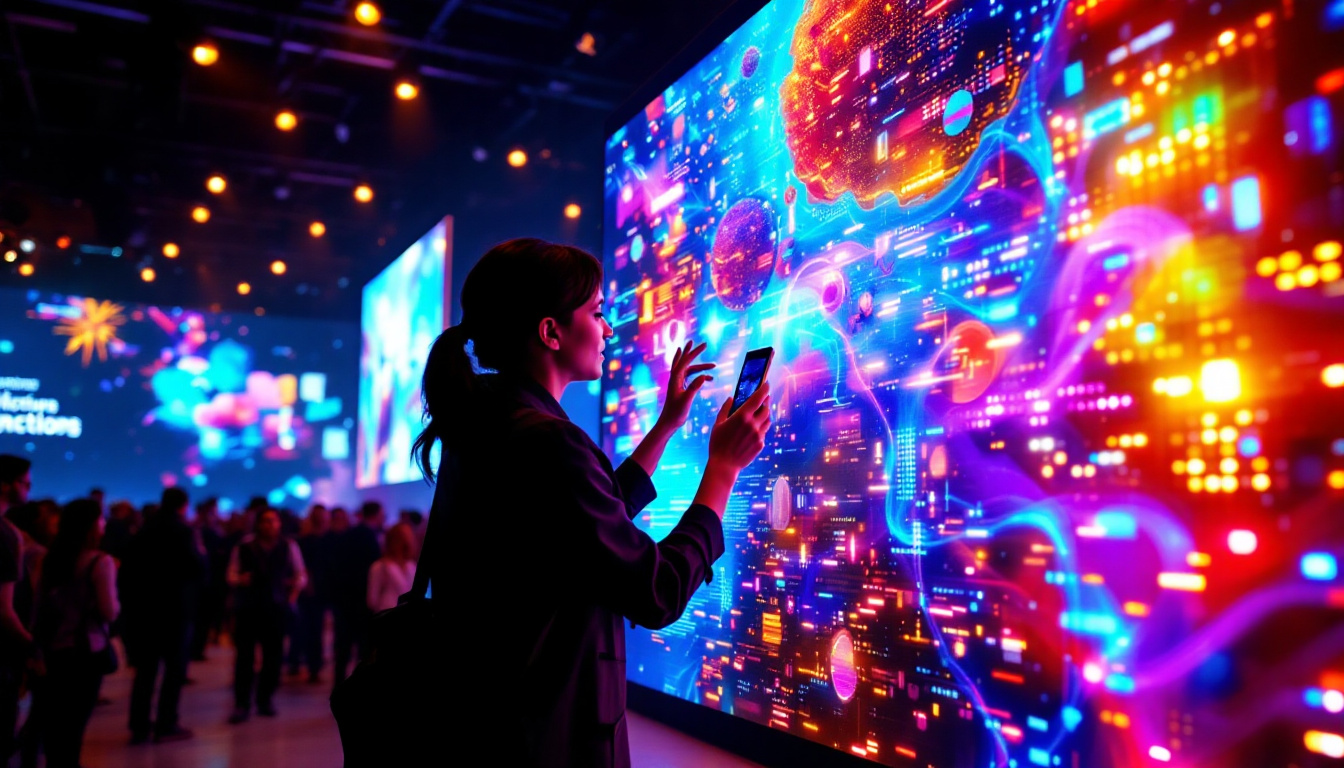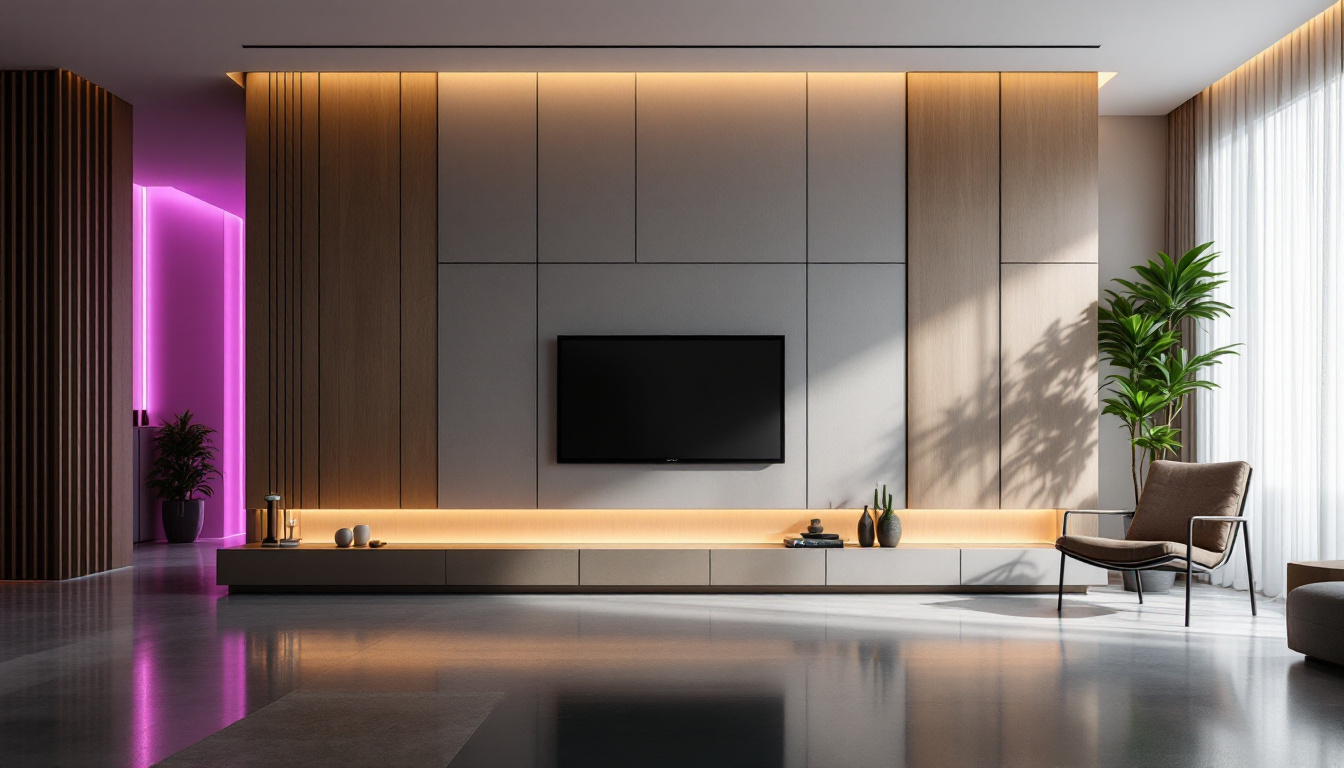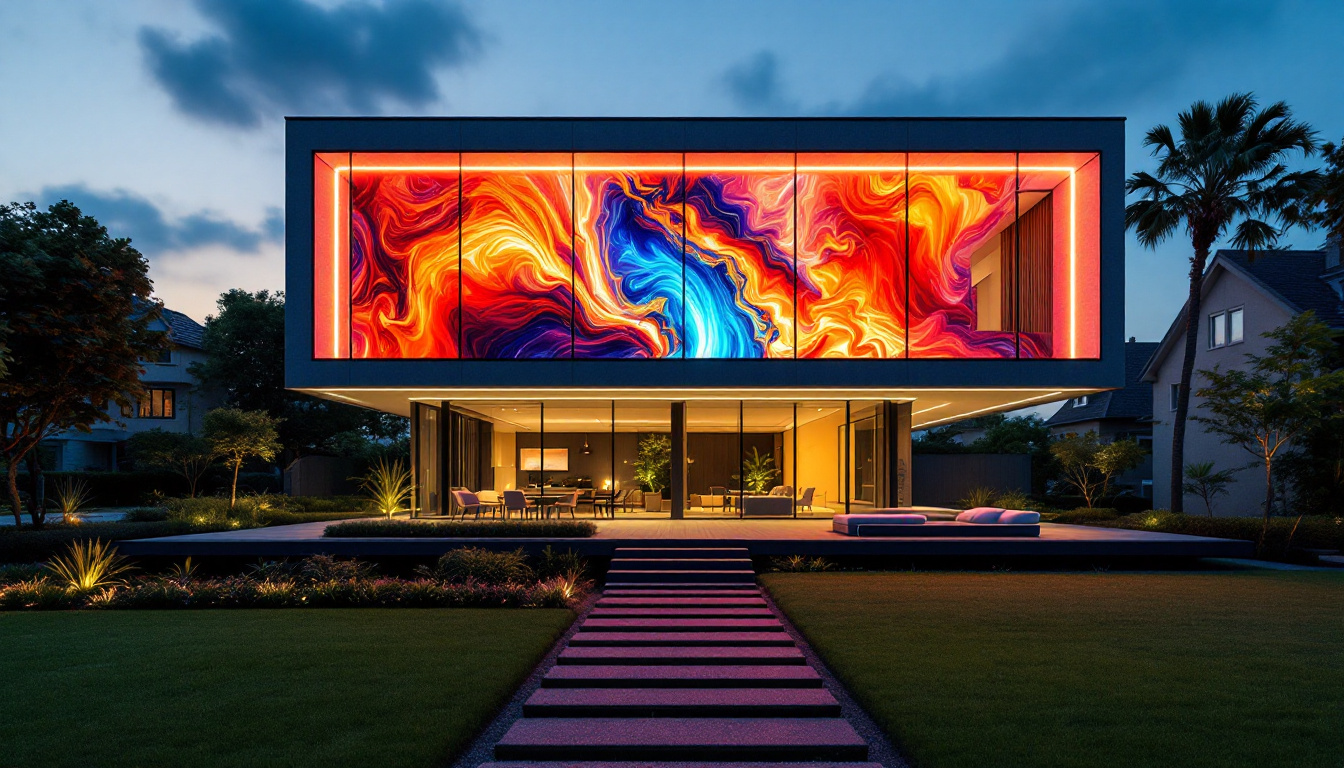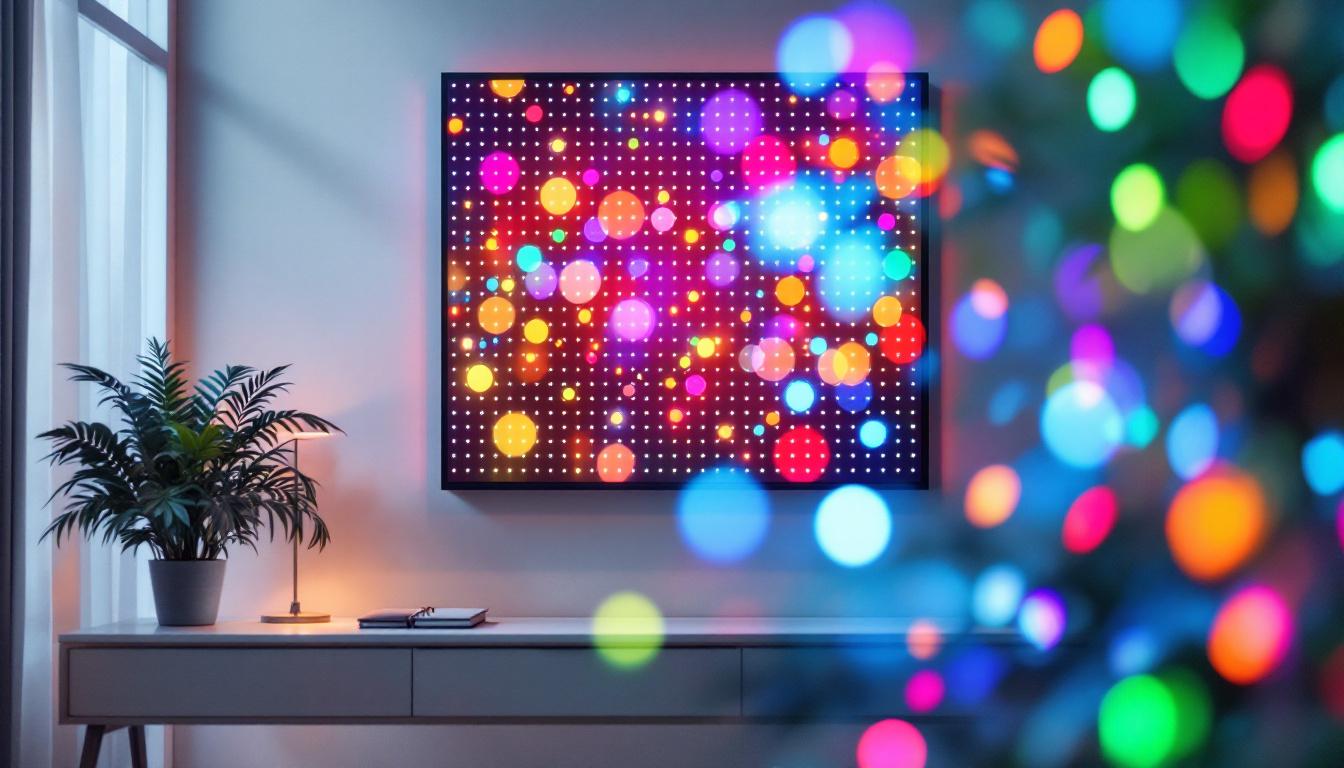In the modern world of advertising and communication, LED displays have emerged as a powerful medium for conveying messages effectively. The versatility and vibrancy of LED technology have made it a preferred choice for businesses looking to capture attention and engage audiences. This article delves into the intricacies of LED displays, exploring their functionality, advantages, and applications.
Understanding LED Technology
At the core of LED displays lies Light Emitting Diode (LED) technology. LEDs are semiconductor devices that emit light when an electric current passes through them. This technology has revolutionized the way visual content is presented, offering numerous benefits over traditional display methods. The compact size, energy efficiency, and long lifespan of LEDs make them an attractive choice for a wide range of applications, from consumer electronics to large-scale advertising installations.
How LEDs Work
LEDs function by converting electrical energy into light through a process called electroluminescence. When electrons move through the semiconductor material, they recombine with electron holes, releasing energy in the form of photons. This process allows for a more efficient and brighter light source compared to incandescent or fluorescent bulbs. The efficiency of LEDs not only reduces energy consumption but also minimizes heat production, making them safer and more environmentally friendly.
The color of the light emitted depends on the materials used in the semiconductor. By combining red, green, and blue LEDs, a full spectrum of colors can be produced, enabling the display of high-quality images and videos. This RGB model is the foundation of color mixing in LED technology, allowing for the creation of millions of colors, which enhances the viewing experience significantly. Additionally, advancements in LED technology have led to the development of white LEDs, which utilize phosphor coatings to produce a more natural light quality, further expanding their applications in various fields.
Types of LED Displays
LED displays come in various forms, each designed to meet specific needs. The most common types include:
- Indoor LED Displays: These are typically used in shopping malls, airports, and conference centers. They offer high resolution and vibrant colors, making them ideal for detailed images and videos. Indoor displays often feature a smaller pixel pitch, which allows for closer viewing distances and sharper images, enhancing the overall visual experience for audiences.
- Outdoor LED Displays: Built to withstand the elements, outdoor displays are often larger and brighter to ensure visibility in direct sunlight. They are commonly used for billboards and public announcements. These displays are engineered with robust materials to resist weather conditions such as rain, snow, and extreme temperatures, ensuring durability and longevity in various environments.
- Transparent LED Displays: These innovative displays allow for visibility through the screen while still displaying content. They are increasingly used in retail environments to showcase products without obstructing views. The transparent nature of these displays creates a unique blend of digital and physical marketing, allowing brands to engage customers in a visually captivating manner while maintaining an open and inviting atmosphere.
Advantages of LED Displays
LED displays offer a multitude of advantages that make them a superior choice for advertising and information dissemination. Understanding these benefits can help businesses make informed decisions about their display solutions.
Energy Efficiency
One of the most significant advantages of LED technology is its energy efficiency. LED displays consume significantly less power compared to traditional display technologies. This not only reduces operational costs but also contributes to a smaller carbon footprint, aligning with the growing emphasis on sustainability. Furthermore, many LED displays come equipped with smart technology that allows for automatic brightness adjustments based on ambient light conditions, further enhancing energy savings and ensuring optimal visibility at all times.
Longevity and Durability
LED displays are known for their longevity. With a lifespan of up to 100,000 hours, they outlast conventional display technologies, which often require frequent replacements. Additionally, LEDs are more durable and resistant to shocks and vibrations, making them suitable for various environments, including outdoor settings. Their robust construction also means they can withstand extreme weather conditions, such as heavy rain or intense heat, making them ideal for outdoor advertising and public information displays that need to remain operational regardless of the elements.
High Brightness and Contrast
The brightness and contrast levels of LED displays are unparalleled. They can produce vivid colors and sharp images, even in bright daylight. This capability ensures that messages are seen and understood, regardless of the surrounding lighting conditions. Moreover, the advanced technology used in LED displays allows for a wider color gamut, which means that they can display a richer array of colors, enhancing the visual appeal of advertisements and presentations. This feature is particularly beneficial for businesses looking to create eye-catching content that stands out in crowded environments, capturing the attention of passersby and effectively communicating their message.
Versatility in Applications
Another compelling advantage of LED displays is their versatility in applications. From large-scale billboards to smaller indoor screens, LED technology can be adapted to fit a wide range of settings and purposes. They are commonly used in retail environments to showcase promotions, in corporate settings for presentations, and even in sports arenas for live event broadcasting. This adaptability makes LED displays a valuable asset for businesses across various industries, allowing them to tailor their messaging to different audiences and contexts. Additionally, the ability to easily update content remotely means that businesses can respond quickly to changing circumstances or promotional needs, ensuring that their messaging remains relevant and engaging.
Applications of LED Displays
LED displays have a wide range of applications across various industries. Their versatility allows businesses to utilize them in innovative ways to enhance communication and engagement.
Advertising and Marketing
In the realm of advertising, LED displays have become a staple. Businesses use them to display dynamic content, including videos, animations, and real-time updates. This engaging format captures the attention of passersby and can significantly increase foot traffic to retail locations. Moreover, the ability to change content quickly allows marketers to tailor messages for specific audiences or events, maximizing the impact of their campaigns. For instance, a restaurant can showcase daily specials or limited-time offers, while a car dealership can highlight seasonal promotions, all in vibrant, eye-catching formats that draw in potential customers.
Events and Entertainment
LED displays are commonly used in concerts, festivals, and sporting events. They provide a platform for showcasing live feeds, advertisements, and interactive content, enhancing the overall experience for attendees. The ability to display high-resolution visuals in large formats makes them ideal for such occasions. Additionally, LED screens can be synchronized with sound systems to create immersive environments that captivate audiences. For example, at a music festival, the visuals can be choreographed to match the rhythm of the music, elevating the sensory experience and leaving a lasting impression on attendees. This technology not only entertains but also serves as a powerful tool for event organizers to promote sponsors and engage with fans through social media interactions displayed in real time.
Transportation and Wayfinding
In transportation hubs like airports and train stations, LED displays serve as vital information sources. They provide real-time updates on arrivals, departures, and delays, ensuring travelers have the information they need. Additionally, LED displays can aid in wayfinding, guiding people through complex environments with ease. These displays can be programmed to show directional arrows, maps, and important announcements, helping to streamline the flow of foot traffic and reduce confusion. Furthermore, the integration of LED technology with mobile applications allows travelers to receive personalized notifications on their devices, enhancing their journey and improving overall satisfaction. As cities continue to grow and transportation networks become more intricate, the role of LED displays in facilitating communication and navigation will only become more critical.
Installation and Maintenance Considerations
While LED displays offer numerous benefits, proper installation and maintenance are crucial to ensure optimal performance and longevity. Understanding these aspects can help businesses maximize their investment.
Installation Best Practices
When installing LED displays, several factors should be considered:
- Location: The placement of the display is critical. It should be positioned for maximum visibility and accessibility, taking into account factors such as viewing distance and angle.
- Structural Support: Depending on the size and weight of the display, adequate structural support is necessary. This may involve custom mounts or reinforcements to ensure stability.
- Electrical Requirements: LED displays require a reliable power source. Proper electrical planning is essential to avoid outages or performance issues.
Maintenance and Upkeep
Regular maintenance is vital for the longevity of LED displays. This includes:
- Cleaning: Dust and debris can accumulate on the surface of the display, affecting visibility. Regular cleaning helps maintain clarity and brightness.
- Software Updates: Keeping the display’s software up to date ensures optimal performance and security. This may involve periodic checks and updates from the manufacturer.
- Monitoring: Implementing monitoring systems can help detect issues early, allowing for timely repairs and minimizing downtime.
The Future of LED Displays
The future of LED display technology is bright, with ongoing advancements promising even greater capabilities. As technology evolves, businesses can expect to see enhancements in resolution, flexibility, and interactivity.
Innovations on the Horizon
Emerging trends in LED technology include:
- MicroLED Technology: This next-generation technology promises even higher resolution and better color accuracy by utilizing smaller individual LEDs.
- Flexible Displays: The development of flexible LED displays opens up new possibilities for creative installations, allowing for curved or irregular shapes that can fit unique environments.
- Integration with IoT: As the Internet of Things (IoT) continues to expand, LED displays are likely to become more integrated with smart technologies, enabling real-time data display and interaction.
Conclusion
In conclusion, LED displays represent a transformative technology in the realm of visual communication. Their energy efficiency, durability, and high-quality output make them an ideal choice for a variety of applications, from advertising to information dissemination. As advancements continue to shape the future of this technology, businesses that embrace LED displays will be well-positioned to engage their audiences effectively.
Understanding the intricacies of LED displays, including their advantages, applications, and maintenance requirements, is essential for any organization looking to invest in this powerful medium. With careful planning and execution, LED displays can significantly enhance visibility and communication, driving success in an increasingly competitive landscape.
Discover LumenMatrix LED Display Solutions
Ready to elevate your visual communication strategy with the latest in LED display technology? Look no further than LumenMatrix, a pioneer in crafting immersive and dynamic visual experiences. Our extensive range of LED display modules, including Indoor and Outdoor LED Wall Displays, Vehicle LED Displays, LED Poster Displays, and more, are designed to captivate your audience and amplify your brand’s presence. Embrace the future of advertising and make a lasting impression with our innovative solutions. Check out LumenMatrix LED Display Solutions today and transform your message into an unforgettable visual journey.

